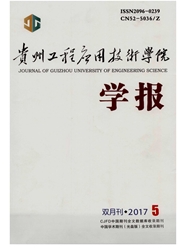

 中文摘要:
中文摘要:
动词“呈”在现代汉语中的基本义可释为“具有或展现(某种形状、颜色、趋势等)”.由“呈”充当谓语中心语的句子,结构简短紧凑,表达类指,用于说明体,书面色彩、文言色彩鲜明,客观、正式、庄重.“呈”字句可分两类:1.“呈1”句:陈述自然现象具有或展现某种具体形状,其宾语有:(1)不含比喻义的形状名词;(2)表示形状的喻体.2.“呈2”句:陈述社会现象具有或展现某种抽象趋势,其宾语有:(1)有一定凝固性的短语,不表比喻;(2)常用汉字和外文字母充当喻体.从词汇层面、句法层面进入修辞层面的“呈”字句,是具有科技语体特征的、表示形似的比喻句式,是比喻中极为简明朴实的一种类型,话语特征符合“记述的境界”而不同于“表现的境界”.
 英文摘要:
英文摘要:
In Modem Chinese the basic meaning of "cbeng " (呈)can be interpreted as Having or showing a certain shape, color, trend and so on. Sentences with "cheng" (呈) acting as predicate center, whose structures are short and compact, are always used in illustrative style. With distinct written and classical characteristics, such sentences are objective, formal and solemn. Sentences with "cheng" can be classified two kinds as follows: 1. "Cheng t " sentence: Stating a natural phenomenon which has or show a certain shape. 2. "Cheng2" sentence: Stating a social phenomenon which has or show a certain abstractive trend. From the lexical level, syntactic level to the rhetoric level, the sentence with "cheng" has become a kind of metaphor structures with features of the scientific and technological style, which can reveal the similarity between the different phenomena. It is an extremely simple homespun kind of Chinese metaphor sentences.
 同期刊论文项目
同期刊论文项目
 同项目期刊论文
同项目期刊论文
 期刊信息
期刊信息
